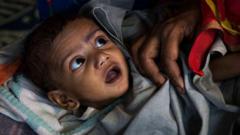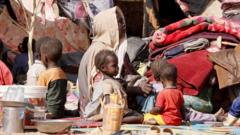New findings from Ashoka University and Monash University highlight that India’s child stunting crisis is significantly influenced by social identity, particularly caste, which affects access to essential nutrition and healthcare.
The Social Stigma Feeding India's Child Stunting Crisis

The Social Stigma Feeding India's Child Stunting Crisis
Research reveals the critical role of caste in India's child malnutrition rates, revealing stark contrasts with Sub-Saharan Africa.
A recent study by researchers Ashwini Deshpande and Rajesh Ramachandran has ignited a crucial dialogue around child malnutrition in India, revealing that 35% of the country’s 137 million children under five are stunted. This rate is notably higher than the average of 33.6% seen across 49 countries in Sub-Saharan Africa, a region grappling with its own child malnutrition challenges. The findings emphasize that caste discrimination plays a significant role in exacerbating India's nutritional crisis, with marginalized groups such as adivasis and Dalits facing the harshest conditions.
Children are classified as stunted if their height is significantly below the expected norm for their age, which is a key marker of malnutrition. During a child’s first 1,000 days of life, crucial brain development occurs, and the right nutrition, healthcare, and environment can influence their lifelong potential. Despite advancements, India remains home to the world's largest number of stunted children, largely due to persistent societal inequities that directly impact nutrition.
The study meticulously analyzed stunting rates among different caste groups in India, finding that children from higher-status castes experienced far lower rates of stunting—only 27%—compared to their counterparts from stigmatized communities. This stark contrast persists even after control for numerous socio-economic factors, underlining the importance of examining social stratification when addressing malnutrition.
Moreover, despite initiatives aimed at improving nutrition, such as those established over the past seventy years, the caste system's influences remain deeply rooted, continuing to define access to nutrition and health resources. The ongoing debate surrounding whether these disparities are attributed to genetic predispositions or the result of historical factors further complicates the understanding of these dynamics.
While some progress has been made in reducing stunting rates across various social groups, the study underscores that children born into poorer families or with less-educated mothers, particularly from marginalized backgrounds, remain disproportionately affected.
The implications of this research illustrate a vital consideration in tackling child malnutrition: the socio-cultural dimensions, specifically caste, must be addressed to formulate effective interventions. The authors conclude that acknowledging social identity in understanding child nutrition crises is essential for creating comprehensive solutions that do not overlook vulnerable populations.




















